Samsung's Smart Monitor M9 is my dream screen, but the OLED panel's hefty price tag is giving me nightmares
With a significant upgrade comes an equally large increase in price
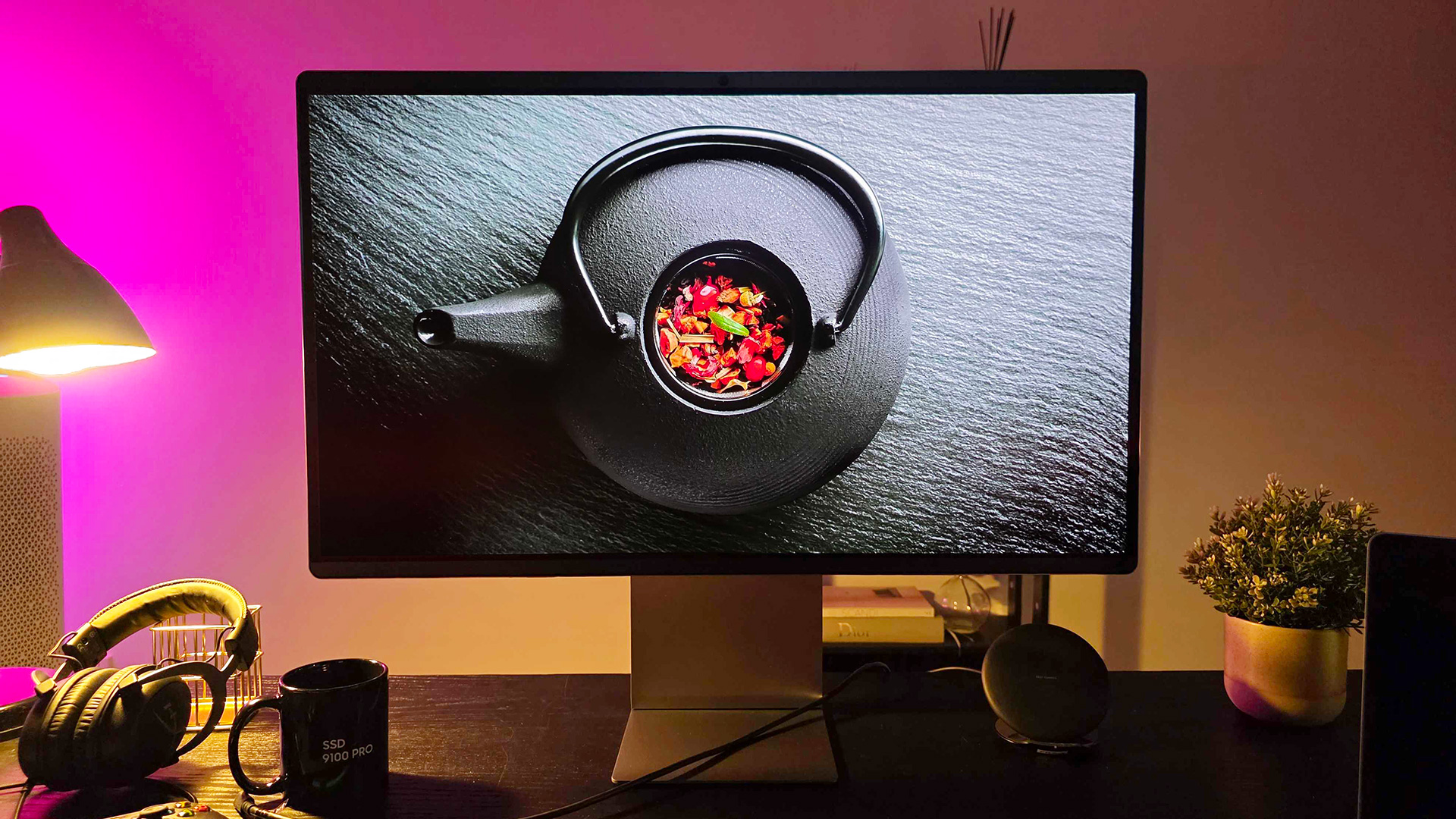
Intended primarily for productivity and media consumption, Samsung’s M-series Smart Monitor range has always felt like a bit of a work in progress, never quite fulfilling all of my monitor wants and needs.
The South Korean manufacturer’s past attempts to merge PC monitors with smart TVs haven't quite nailed it, often falling short when it comes to things like gaming. And, frankly, a VA panel is hardly ideal for watching movies and TV shows.
Now, Samsung’s new Smart Monitor M9 is finally trying to live up to the line's potential, offering an all-in-one solution that's excellent for both work and play — the only downside is that its exorbitant price tag puts it well beyond my reach.
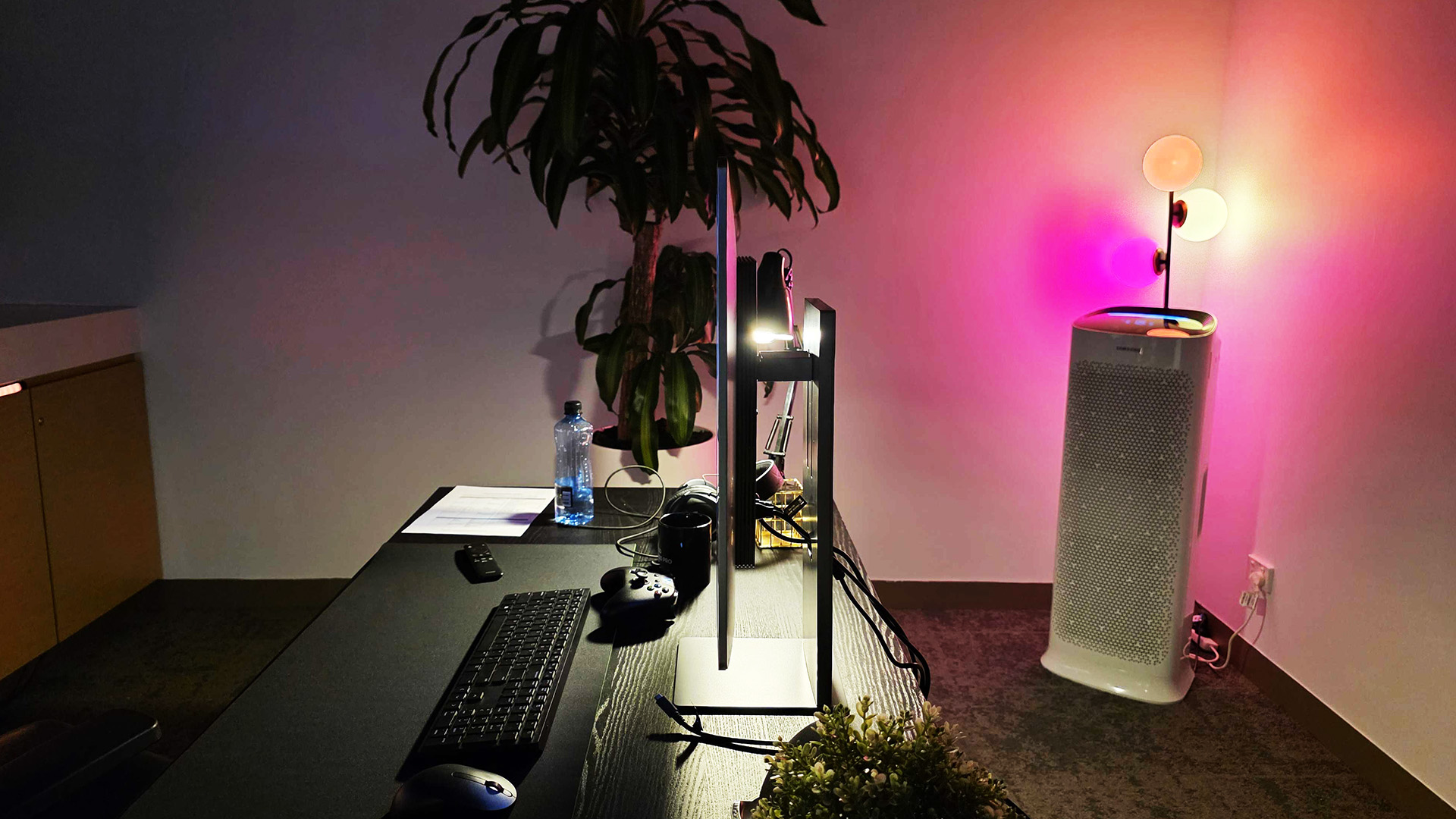
Compared to the VA panel on the Smart Monitor M8, the new M9 offers a significant upgrade over its predecessor thanks to its 32-inch 4K QD-OLED panel, which dramatically enhances contrast and color for an improved movie-watching experience.
The display even holds ‘Pantone Validated’ status, guaranteeing precise reproduction of more than 2,100 colours and 110 SkinTone shades — something that should make it a more attractive proposition for creative professionals.
Just like Samsung's two flagship televisions of the year, the QN990F and S95F, the Smart Monitor M9 features Samsung Vision AI, providing advanced upscaling and picture optimisation features.
Like those two TVs, which I reviewed earlier in the year, the Smart Monitor M9 boasts similar AI picture optimization features that make it easy to apply optimal color, brightness and contrast values for any given situation. After all, playing games and streaming movies is very different to typing documents and creating spreadsheets.
That said, peak brightness is capped at around 250 nits, even with HDR10+ support. Admittedly, this limitation is less than ideal for HDR movies, but isn't entirely surprising for an OLED monitor.
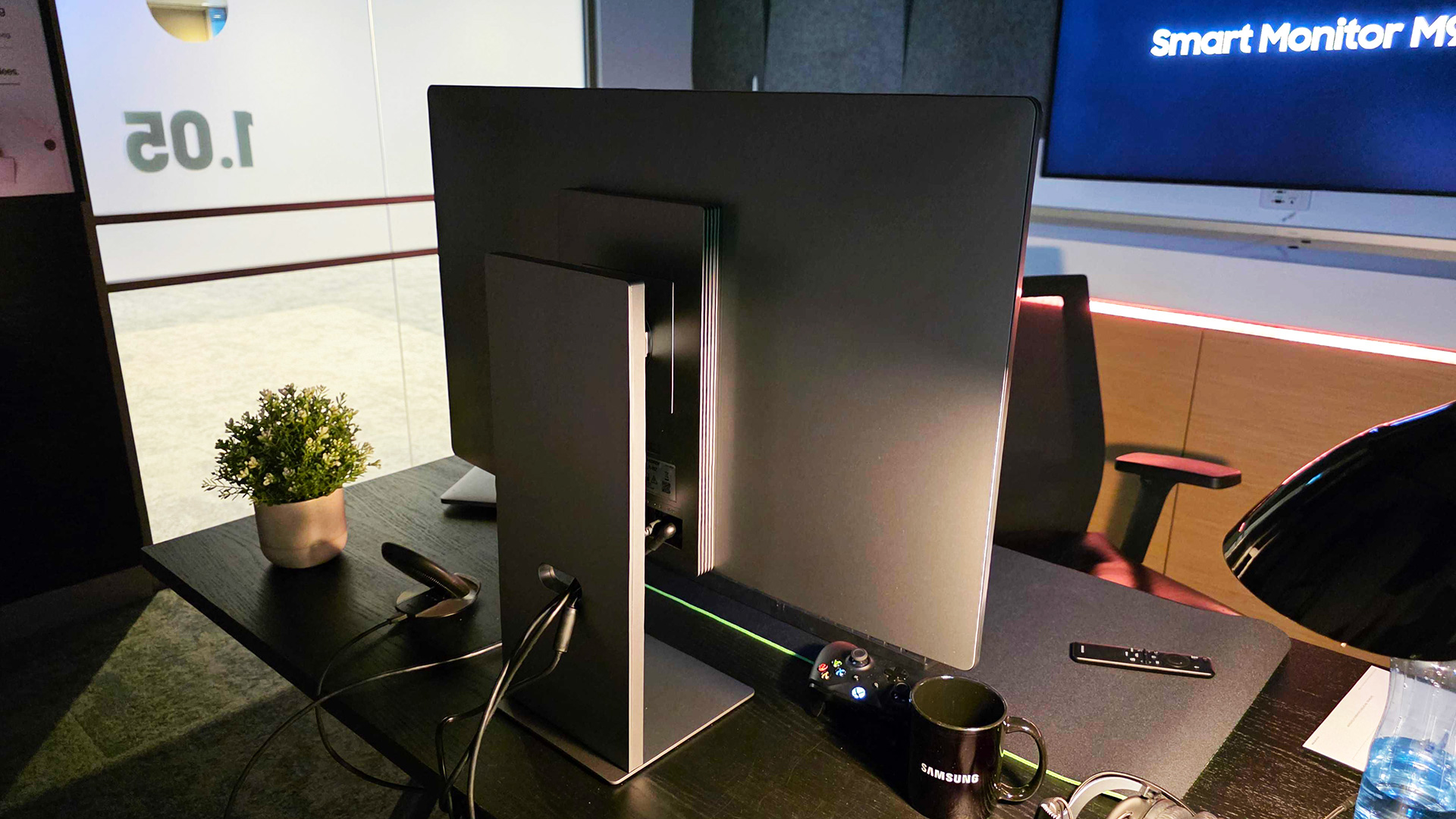
It's important to remember that monitors aren't supposed to reach the same eye-scorching brightness levels as living room TVs, as they're designed for up-close viewing. For instance, Samsung's Odyssey OLED G9, reviewed by my colleague Tony Polanco, was lauded as an exceptionally bright and immersive gaming monitor, despite achieving roughly the same peak brightness as the M9.
Additionally, you also have to factor in OLED technology's susceptibility to burn-in from static images. Fortunately, Samsung has incorporated several features to reduce that risk. This includes a proprietary cooling system, which employs a ‘pulsating heat pipe’ to uniformly disperse heat across the entire panel without altering brightness levels.
And, just like the Odyssey OLED G9, the M9 also comes with Pixel Shift functionality, which subtly shifts the whole image over time to prevent it staying in one place for too long, as well as a suite of 'Panel Care' options, such as the ability to adjust the brightness of logos, and a 'Pixel Refresh' feature which takes around 30 minutes to run through.
Of course, the biggest upgrade for me is that Samsung’s Smart Monitor M9 now benefits from a 165Hz refresh rate, a vast improvement over the 60Hz limit of previous M-series models.
This higher frame rate, along with a 0.03ms response time and Nvidia G-Sync support, not only provides a smoother viewing experience but also finally makes the M9 a viable option for gaming — especially with the inclusion of a dedicated Gaming Hub, giving you quick access to game-specific viewing modes and settings
In other words, there's far less of a trade-off to make for those like myself who want to work and play in equal measure on the Smart Monitor M9.
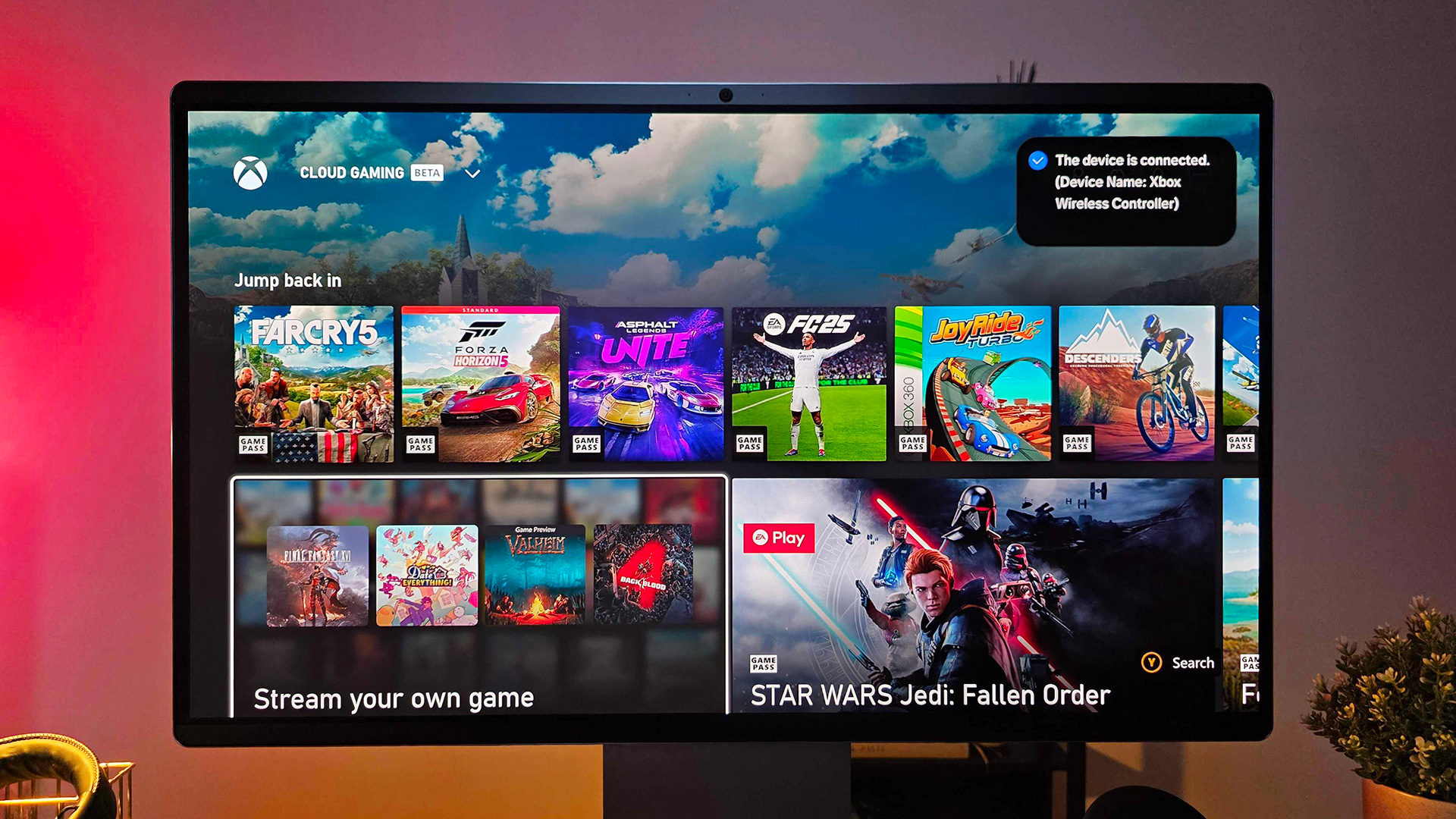
For those familiar with recent Samsung TVs, the M9’s Tizen-based interface offers an instantly recognisable user experience. A simple press of the ‘home’ button on the included remote (yes, a remote is supplied with this monitor) brings you to the M9’s home screen.
From here, all your connected sources — be it your PC, smartphone or gaming console — and installed apps are readily accessible. Screen mirroring is also available for Samsung DeX compatible devices, though I found I could get a much more stable connection via USB-C.
Beyond the expected streaming and catch-up apps, the Smart Monitor M9 also provides direct access to web services like Microsoft 365, meaning it’s entirely possible to get your work done without even being connected to a computer, provided a Bluetooth mouse and keyboard are paired.
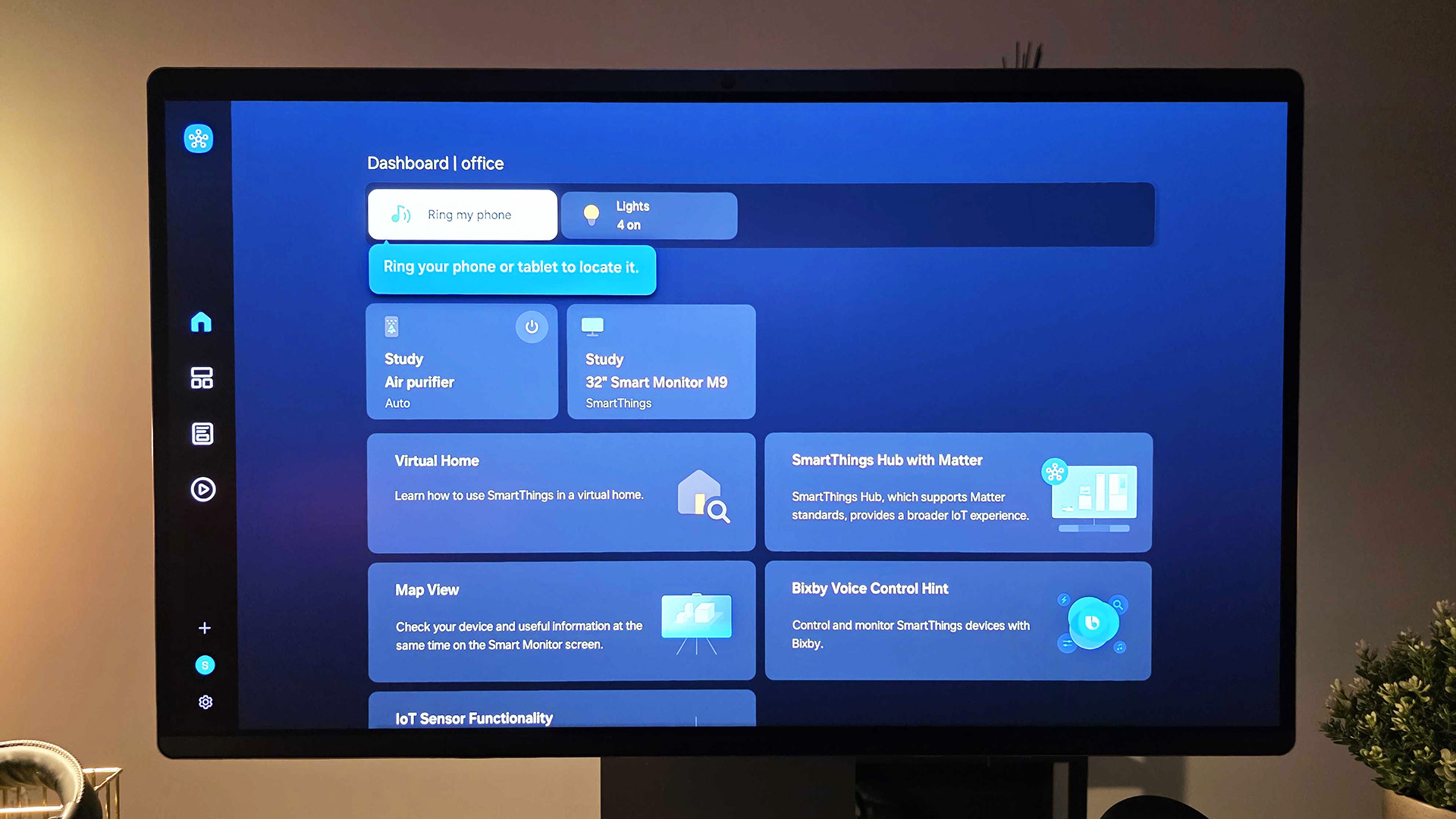
It also comes with a built-in 4K camera which is capable of crisp video calls, but I found that it struggled a bit in low-light situations. Of course, if the security of your work documents is your primary concern, you can rest easy knowing that your logins, along with any IoT devices linked to the monitor via Samsung’s SmartThings app, are protected by Samsung’s Knox Vault, a hardware-based security system that locks sensitive data like passwords and biometrics on a secure chip.
During my time with the Smart Monitor M9, I came to the conclusion that it's a huge leap forward from its predecessor, offering more than enough advancements to justify a price increase.
For a device that will primarily serve as a monitor, the steep price of $1,600 / £1,199 / AU$2,499 is simply unaffordable for me, and likely for many others. So, despite being the Smart Monitor I've always dreamed of, it will probably remain just that — a dream for now.

Stephen Lambrechts is the Managing Editor of Tom's Guide AU and has written professionally across the categories of tech, film, television and gaming for the last 15 years. Before Tom's Guide, he spent several years as a Senior Journalist at TechRadar, had a brief stint as Editor in Chief at Official Xbox Magazine Australia, and has written for such publications as APC, TechLife Australia, T3, FilmInk, AskMen, Daily Telegraph and IGN. He's an expert when it comes to smartphones, TVs, gaming and streaming. In his spare time, he enjoys watching obscure horror movies on physical media, keeping an eye on the latest retro sneaker releases and listening to vinyl. Occasionally, he also indulges in other non-hipster stuff, like hiking.
You must confirm your public display name before commenting
Please logout and then login again, you will then be prompted to enter your display name.
